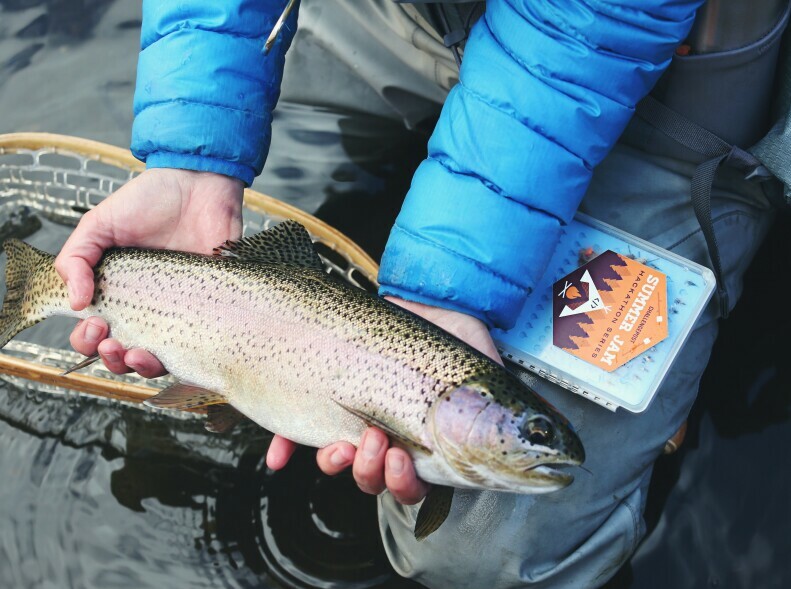Welcome to the magical world of fishing knots, where the art of knot-tying transforms your fishing adventures from “ugh” to “wow”! Whether you’re a wide-eyed 5-year-old going on your first fishing outing or a seasoned 85-year-old taking your Grandkids fishing for the their first time, the secret to fishing success lies in mastering these essential knots. So let’s go Knot-Krazy and learn the Essential Knots together!
The Significance of Strong Knots (Why it Matters)
Imagine this, you just tied into the biggest fish you have ever had on your line and suddenly you feel your line go slack! You reel in the slack line only to discover it broke off right at the hook. You are devasted knowing the big one got away. That’s why knots matter and knowing how to properly tie a few of the essential ones is the key to you catching that big one opposed to telling a tale of the big one getting away.
Fishing Knots are the unsung heroes of the day, ensuring your line stays hooked with your fishy foe on the other end. Remember building with Lego as a kid? Think of knot tying in a similar fashion. Each Lego block added strength to your tower of fun…well the knot is your building block and done properly it can withstand the biggest of challenges from the fishy below.
5 Knots Every Angler Should Know
Every angler will have a go to knot but, depending on the situation you may need one of, or a combination of, the following 5 knots.
- Improved Clinch Knot – A Timeless Classic: This knot has been around for a long time and is considered the most popular knot for tying your hook or lure to your line.
It is easy to tie and works well with monofilament or fluorocarbon line. However, it doesn’t work well with braided line.
Watch the following video from Berkley on how to master this knot.
- Palomar Knot – A Powerhouse Connection: This knot is perfect for any line type including braided. It’s like giving the hook a superhero cape! It keeps your line and hook connected even against the biggest and toughest opponents.
Here is a video from Berkley on How To Tie the Palomar Knot.
- Double Uni Knot – Versatility Unleashed: The Double Uni Knot is my go to knot when tying 2 different types of line together such as, braid to lead core or braid to fluorocarbon leaders. When this knot is pulled tightly together, it creates a nice smooth transition in the join and allows the line to be wound onto the reel without issue.
Watch this video for how to use the Double Uni Knot to tie Braid to a Fluorocarbon Leader.
- Blood Knot – Uniting Lines Seamlessly: When it comes to joining two lines together that are of similar diameter, I turn to the Blood Knot. When done right, it creates a strong bond between the lines and can stand up to the wildest fish fights!
Watch this video to see the magic of this knot:
- Albright Knot – Low Profile: This knot is so versatile and is used when connecting two lines of different diameters and different materials. Like the Double Unit Knot, it is most useful for connecting a backer line to a main line or main line to a leader line. Because of the small footprint it has, the knot will pass through the rod eyes with ease and will not cause any problems when reeled into a line counter trolling reel or centre pin reel.
Here is a great video on how to tie the Albright Knot:
Some Final Knotty Tips
With any fishing trip comes some tips to be successful. Tying knots is no different. So here are a few that should help you be successful on your next outing:
- You can increase the strength of your knot simply by wetting it just before you pull it tight.
- Store your line in a cool, dry place and out of direct sunlight.
- Replace your line on a regular basis. Just because you never opened the package that you bought 5 years ago, does not mean the line is still good. Test it for breaking strength by tying a few knots. If they break, the line needs replaced.
- You need a good pair of scissors for cutting the tag ends of your knots. Buy a good pair that can handle cutting braided line. It is much tougher than monofilament.
- Practice, practice and more practice tying the different knots and knowing the best application for each one. There are so many different types and you need to find which ones work best for you.
- Have fun learning and practice with different types of line, in different weather conditions, with and without gloves on.
Final Thoughts
You don’t want to hike to your favourite spot only to lose your fish because of a poorly tied knot. 9 times out of 10, it is not the line that fails, or the hook, or the lure. It is the knot. Practice them and learn them well. Practice truly does make for perfection.
The knots outlined above will make your next fishing adventure a success, especially fighting the big one. So grab your gear, plan your route, tie those knots and catch those fish. The thrill of the chase and the joy of catching the fish is what makes this sport so much fun. Now go out there and call here fishy, fishy and so them you have mastered the art of tying a knot and they will not beat you anymore!
Please feel free to leave any comments below. I would love to hear about your fishing stories and successes.
In the mean time, keep it knotty, keep it fun and keep on fishing!

